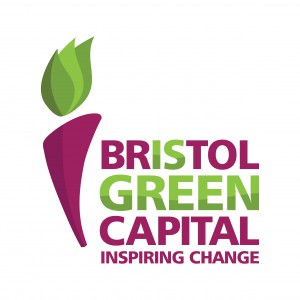The pilot of a community kitchen in Portee-Rokupa, Freetown, Sierra Leone
There is political controversary around the total population of Freetown, Sierra Leone. The 2021 mid-term Population and Housing census noted a significant decrease in Freetown’s population which has subsequently been challenged by the mayor and other leading stakeholders. Statistics vary from 600,000 to 1.35million. Regardless, it is estimated that 36% of the city’s population live within densely populated informal settlements scattered across Freetown’s eastern peninsula. These communities, not too dissimilar to other low-income settlements across the city, and indeed other densely populated urban centres, are often located in geographically vulnerable areas and prone to increased hazards, risks and disasters.
It is in the informal settlement of Portee Rokupa where researchers from the University of Bristol have been working since 2021 (Figure 1). The ESRC funded ‘Beyond the Networked City’ project (grant number: ES/T007656/1) is a collaboration between the University of Bristol, Loughborough University, Sierra Leone Urban Research Centre (SLURC), Makerere University, and the University of Cape Town that seeks to further understand urban service delivery of key infrastructure such as water, sanitation and energy in Freetown and Kampala. In close partnership with SLURC, over 360 households in Portee Rokupa were surveyed on their energy services such as electricity and cooking.

In Portee Rokupa, like most of these communities, their residents, mainly women and young girls, carry out the daily task of cooking. Cooking, whether for personal consumption or income generating purposes, is usually prepared using traditional biomass fuels such as charcoal with basic, inefficient metal stoves called coal pots (Figure 2). The use of traditional coal pot stoves are contributors to air pollution and environmental degradation affecting health of users and local forest cover.

Working closely with the residents and community actors in Portee Rokupa, there is an overwhelming desire to transition to cleaner cooking solutions, but there are challenges around accessibility, availability, finance, and imposed knowledge that hinders the sustainable uptake of ‘clean’ cookstoves. Whilst trying to further understand what could be done to improve their cooking service delivery, the idea for a communal cooking space, which offers a range of cooking technologies, to be used on a pay-as-you basis, was both desirable and aspirational for the community.
SLURC project managed the community kitchen project whilst also facilitating community dialogue to ensure that residents themselves were part of the design and construction, and management of the kitchen. They also fostered new and existing partnerships with key stakeholders including the Government Technical Institute (GTI), the Electricity Generation and Transmission Company (EGTC), and Afrigas, a national LPG supplier. What started as ad-hoc discussions around the need to improve cooking service delivery within informal settlements, turned into the creation of the Platform for Energy Safety, innovation, and Access Consortium (PESIA), a call to action for stakeholders to further understand the cooking needs of residents living in informal settlements.
To ensure long-term sustainability of the kitchen, community members were selected to become community Energy Champions and were trained by the above stakeholders on the use, maintenance, finance and safety of different cooking technologies that would enable them to provide tailored support in the community kitchen as well as broader advice around energy choices within the community. The community were involved at every stage of the project from kitchen design, choice of location, selection of preferred stoves and fuels as well as overall kitchen management. For example, because Portee Rokupa is predominantly a fishing community, the desire for larger stoves and ovens that would help smoke, preserve and process fish was something residents regularly communicated. The community kitchen does not only provide access to improved cooking facilities, but also serves as a hub for broader community interaction, something that is of importance to the community.

So, what has the Community Kitchen achieved? Since it’s official launch in May 2024 (Figure 4), the pilot has received significant attention within Freetown, especially on social media channels and within local news outlets. Management of the kitchen has been fully handed over to the community and energy champions who have elected a chairwoman and a chairman who will oversee the use of the kitchen and be responsible for financial accountability. Residents of Portee Rokupa are now regularly using the kitchen facilities, not only for their mealtime cooking, but for community events such as parties and weddings, and local entrepreneurs are using the kitchen for productive uses such as food preparation, fish smoking and soap making.
The broader impact of this initiative extends beyond the immediate benefits of access to cleaner, more efficient cooking solutions. The kitchen is now an official vendor of Afrigas bottles, bringing a consistent supply of LPG to the community for the first time. Community buy-in, consistent dialogue, co-creation of kitchen design and the training of energy champions has fostered a sense of ownership and responsibility, encouraging them to advocate for and implement sustainable practices within their communities. This grassroots approach has also extended into other informal communities such as Susan’s Bay and Dwazark where energy champions are spreading their knowledge to ensure households are more aware of different cooking options available rather than solely relying on traditional ways of cooking. The Portee-Rokupa community kitchen was a pilot initiative driven by a community desire to have access to alternative cooking services. It is now forging its way as a beacon of knowledge, empowerment and sustainability. It demonstrates how targeted training and community engagement can drive significant changes, paving the way for a more sustainable and resilient future for all. As these Energy Champions continue their work, they are not just transforming kitchens; they are transforming lives and building a brighter, greener future for their communities.

—————————-
This blog is written by Amadu Kamara Labor and Dora Vangahun from Sierra Leone Urban Research Centre, Freetown, Sierra Leone; and Charlotte Ray and Sam Williamson from the School of Electrical, Electronic and Mechanical Engineering, Electrical Energy Management Research Group, University of Bristol.
The background research behind this work was funded by the ESRC through grant ES/T007656/1, Beyond the Networked City: Building innovative delivery systems for water, sanitation and energy in urban Africa. The Community Kitchen was funded by a joint EPSRC/ESRC Impact Acceleration Account Award, grant numbers EP/X525674/1 ES/X004392/1.















.jpg)








